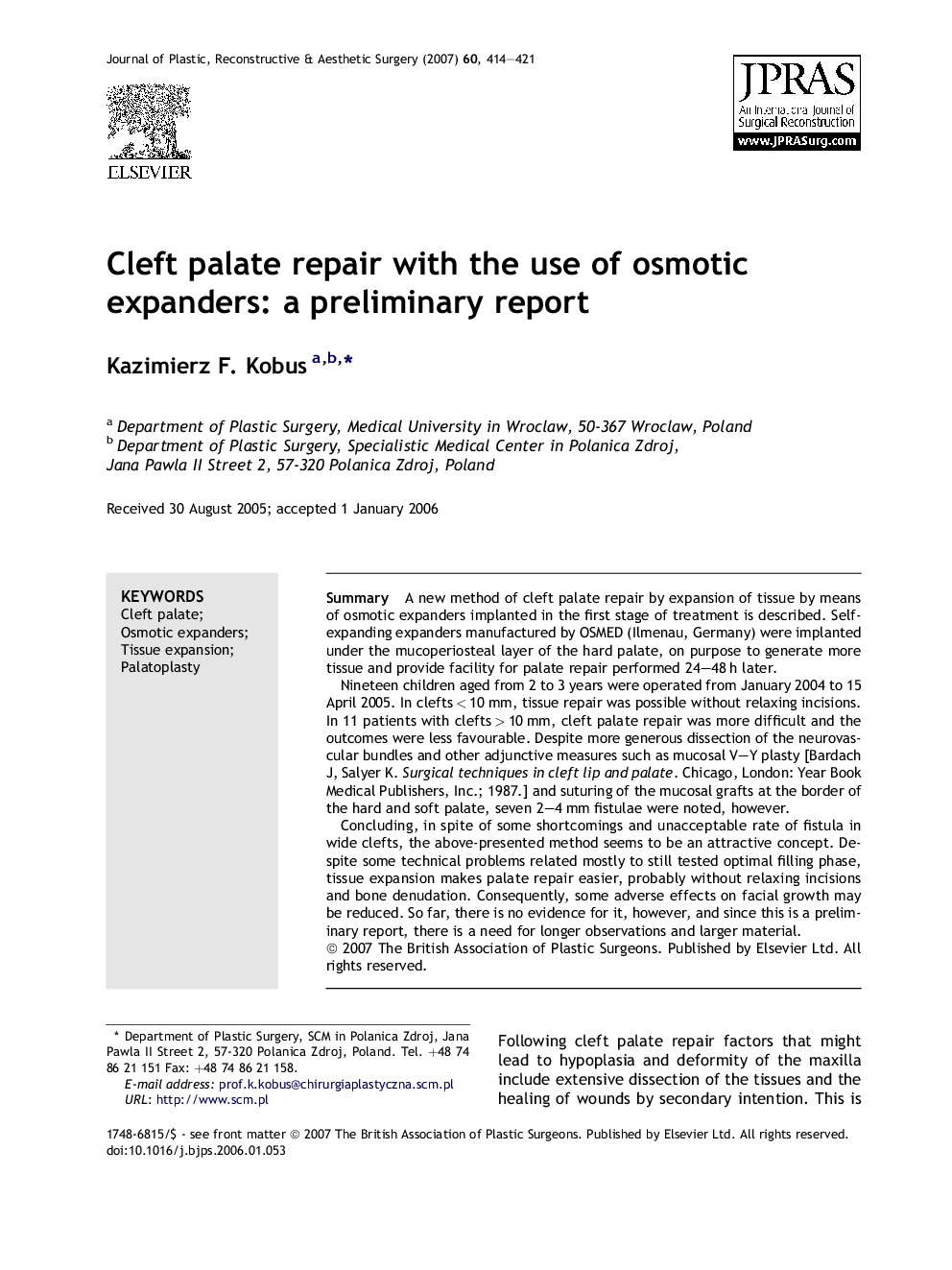| Article ID | Journal | Published Year | Pages | File Type |
|---|---|---|---|---|
| 4121950 | Journal of Plastic, Reconstructive & Aesthetic Surgery | 2007 | 8 Pages |
SummaryA new method of cleft palate repair by expansion of tissue by means of osmotic expanders implanted in the first stage of treatment is described. Self-expanding expanders manufactured by OSMED (Ilmenau, Germany) were implanted under the mucoperiosteal layer of the hard palate, on purpose to generate more tissue and provide facility for palate repair performed 24–48 h later.Nineteen children aged from 2 to 3 years were operated from January 2004 to 15 April 2005. In clefts < 10 mm, tissue repair was possible without relaxing incisions. In 11 patients with clefts > 10 mm, cleft palate repair was more difficult and the outcomes were less favourable. Despite more generous dissection of the neurovascular bundles and other adjunctive measures such as mucosal V–Y plasty [Bardach J, Salyer K. Surgical techniques in cleft lip and palate. Chicago, London: Year Book Medical Publishers, Inc.; 1987.] and suturing of the mucosal grafts at the border of the hard and soft palate, seven 2–4 mm fistulae were noted, however.Concluding, in spite of some shortcomings and unacceptable rate of fistula in wide clefts, the above-presented method seems to be an attractive concept. Despite some technical problems related mostly to still tested optimal filling phase, tissue expansion makes palate repair easier, probably without relaxing incisions and bone denudation. Consequently, some adverse effects on facial growth may be reduced. So far, there is no evidence for it, however, and since this is a preliminary report, there is a need for longer observations and larger material.
